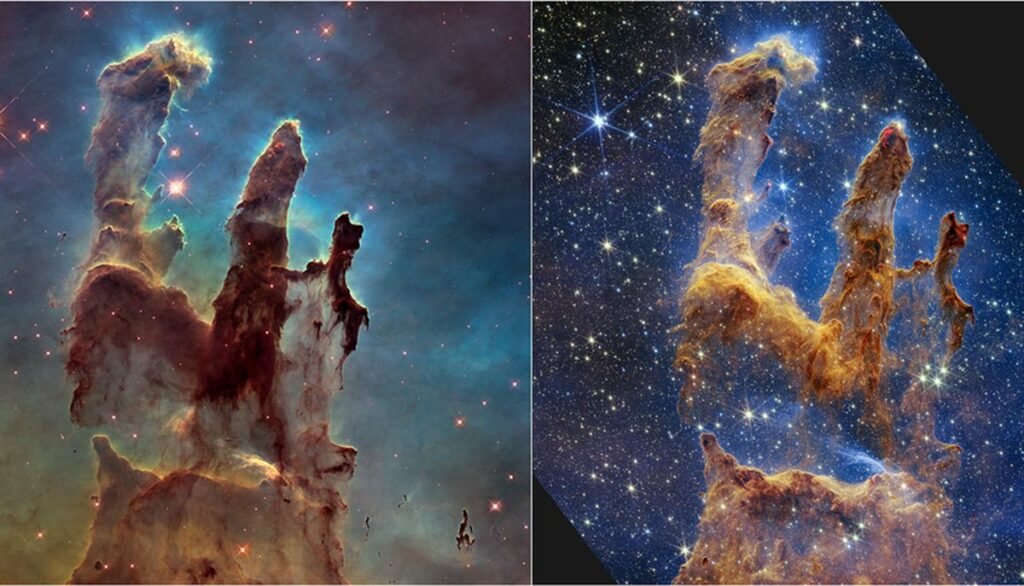The space telescope James Webb obtained an image of the iconic Pillars of Creation, reveling a great quantity of stars.
More information about James WebbClick here
Source: Space.com
Located in the constellation Serpens, some 7,000 light-years away, the magnificent Pillars of Creation are column-shaped clouds of interstellar dust and gas that are part of the Eagle Nebula. The first image of them, taken in 1995 by the James Webb Space Telescope’s predecessor, the Hubble Space Telescope, stunned astronomers with its intimidating beauty.
The new photograph obtained by Webb’s Near-Infrared Camera (NIRCam) reveals the pillars in much greater detail, with fine structures of the clouds emerging with clarity and hundreds of previously invisible stars sparking throughout the image. Many of these stars were born just a few hundred thousand years ago, NASA said in a statement(opens in new tab).

Thanks to its ability to detect infrared light, which is essentially heat, Webb can peer through the clouds and witness protostars springing into life from the coalescing dust. Hubble, with its much weaker infrared detectors, attempted to look inside the nebula as well, but Webb’s results far exceed those attempts. Webb’s views not only deliver a new level of detail and sharpness, but the telescope also sees many more stars inside the clouds and throughout the surrounding universe.
“Webb’s views will help researchers revamp their models of star formation by identifying far more precise counts of newly formed stars, along with the quantities of gas and dust in the region,” NASA said in the statement. “Over time, they will begin to build a clearer understanding of how stars form and burst out of these dusty clouds over millions of years.”
“Young stars periodically shoot out supersonic jets that collide with clouds of material, like these thick pillars,” ESA wrote. “This sometimes also results in bow shocks, which can form wavy patterns like a boat does as it moves through water. The crimson glow comes from the energetic hydrogen molecules, that result from jets and shocks.”
The Eagle Nebula is part of the Milky Way galaxy. Webb is able to see the Pillars against the thick band of our galactic home, which obscures the view of the more distant universe.

